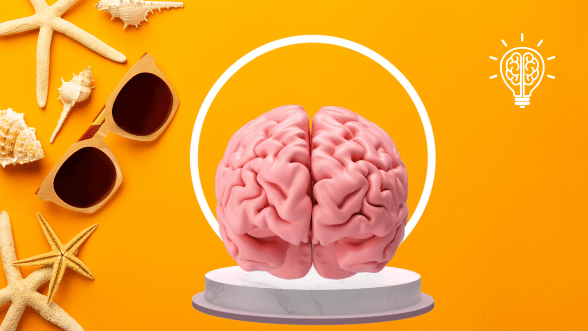
If you’ve ever struggled to start a new task, you’re not alone. For people with ADHD, task initiation is a common hurdle. The good news is that we’re constantly learning more about how the ADHD brain works. We’re also discovering tools to make daily routines easier, including task initiation. Here, we take a closer look at one tool in particular: dopamine menus.
The Connection Between ADHD & Dopamine: Why It’s Hard to Find Motivation
If you have ADHD, task initiation can be a struggle. That’s because ADHD affects the brain’s executive functions, which are responsible for organizing, planning, and performing tasks. Thinking about how long a task will take and which tools you’ll need to complete it may leave you frustrated or demotivated. This can lead to procrastination or avoidance, creating compounding challenges.
ADHD doesn’t just affect executive functions. ADHD and dopamine also share a unique relationship. The condition is linked to irregular activity of neurotransmitters—one of which is the feel-good chemical, dopamine. Specifically, people with ADHD tend to have lower levels of dopamine, affecting their ability to feel motivated and rewarded for tasks. In other words, it’s normal for a person with ADHD to feel reluctant to start a new task if their brain knows the activity won’t lead to feelings of pleasure or reward.
Fortunately, there are workarounds for people with ADHD to create their own dopamine. One method is creating your own dopamine menu.
What Are Dopamine Menus?
The dopamine menu is a concept created by ADHD expert Jessica McCabe. Also known as a “dopamenu,” this concept involves a list of tasks you can use to stimulate dopamine based on the scenario you’re facing and your specific needs. The menu is broken down into four categories.
Appetizers
Think of these as quick activities that can give you a brief boost of dopamine. They’re easy to incorporate into your daily routine. People who tend to hyper-focus may find these helpful because appetizers allow for a quick break before resuming the activity at hand.
Entrees
These activities are more time-intensive and will require some energy, but they also offer a greater payoff. Turn to them to decompress after the work day or to self-regulate when you have time to spare on the weekend. These dopamine-promoting hobbies will allow you to recharge.
Sides
A side is an activity that you can do alongside a task without breaking focus. If you find it challenging to focus on one activity at a time, you may find it helpful to incorporate sides into your routine to maintain your dopamine levels, thereby helping promote concentration and focus.
Desserts
Dopamine-boosting desserts are indulgent and should be enjoyed in moderation. They can give you a dopamine fix and aren’t inherently bad, but it’s important to balance them alongside other tasks and activities. For example, scroll through social media as a dessert or indulge in your favorite TV show. To avoid overdoing it, fold the laundry while watching an episode or set a timer to limit your screen time.
How to Create Dopamine Menus
If you’re struggling to initiate or follow through with a task, your dopamine menu can be a useful tool. It can give you a dose of feel-good brain chemicals that spur motivation. It can be especially effective when combined with other ADHD task initiation tools, such as visual aids and breaking goals up into smaller milestones.
Each individual has their own activities that unlock joy, so creating your dopamine menu may take some time and thought. Here are some examples you can use to get started:
- Appetizers: Try five-minute activities such as playing with a pet, doing a small puzzle, or making a smoothie or snack.
- Entrees: Consider doing a craft, playing a game, taking a walk, or reading a book.
- Sides: Think of ongoing activities that won’t distract you from other tasks, such as playing with a fidget toy, or listening to an audiobook or podcast.
- Desserts: Choose activities to enjoy sparingly, such as scrolling through social media or playing a video game.
Building your ADHD toolkit can be an involved process, but it’s one that can make a big difference in your day-to-day routine.




